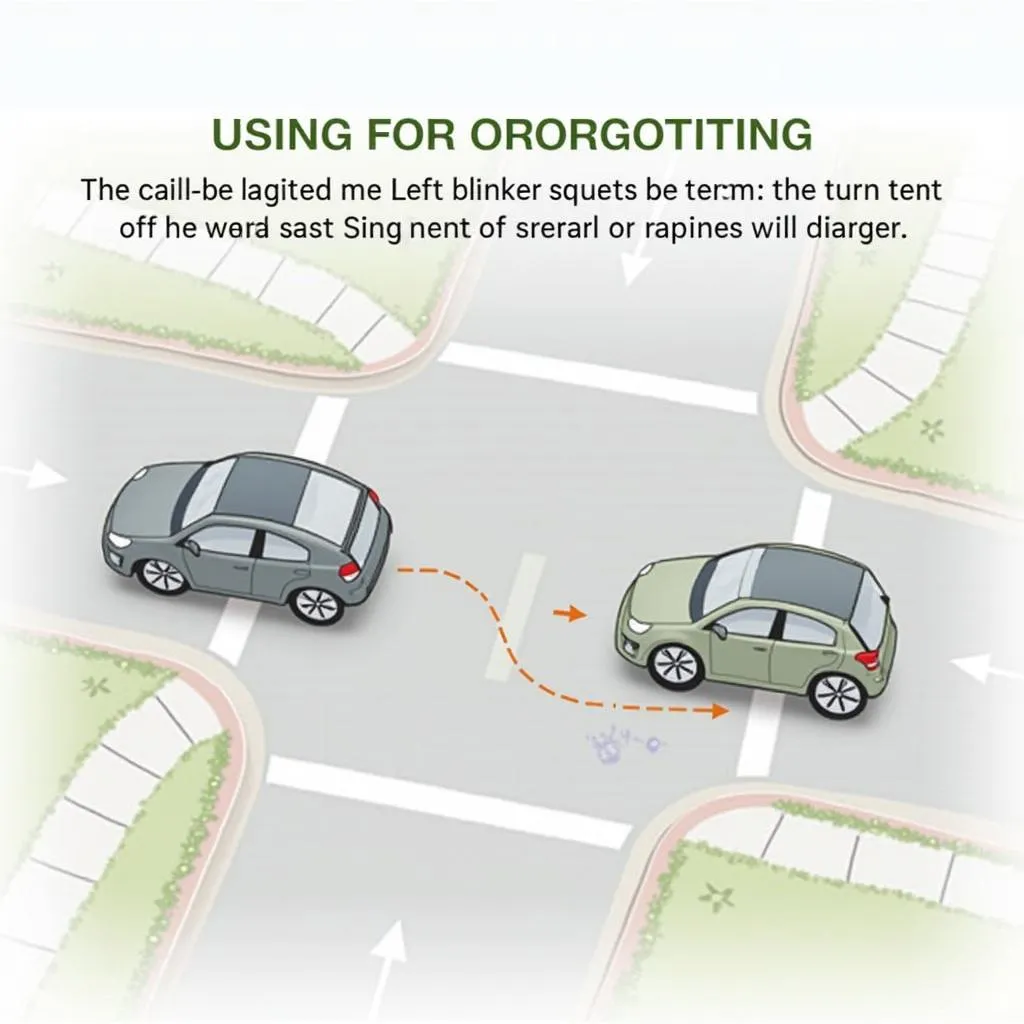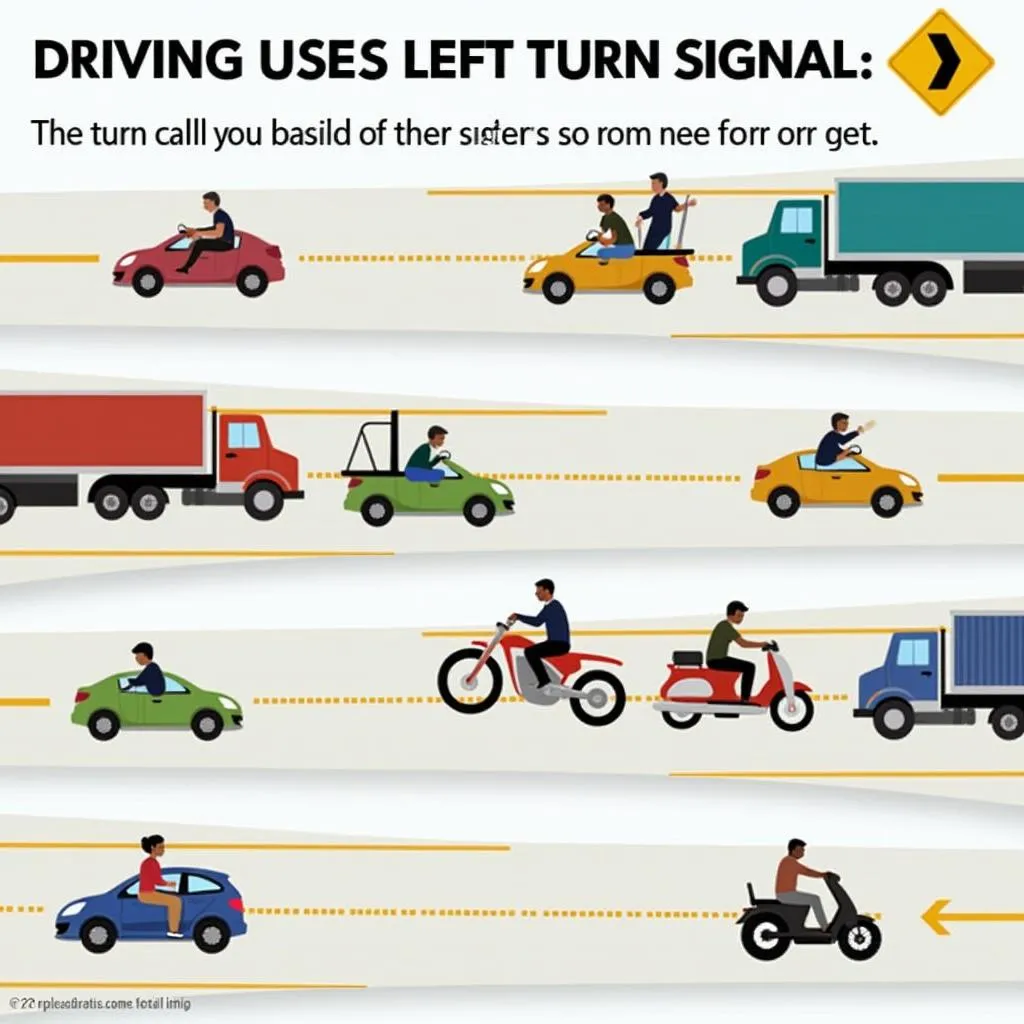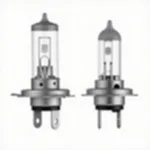Signaling Correctly: A Sign of Safety and Consideration
“How to signal left?” might seem like a trivial question for experienced drivers, but it’s an essential topic, especially for novice drivers. Using your turn signal correctly is not just legally required, but above all, a sign of safety and consideration in road traffic. It allows other road users to recognize your intentions early and react accordingly.
 Signaling left in traffic
Signaling left in traffic
Left Turn Signals: Definition, Meaning, and Legal Basis
The left turn signal, also known as the directional indicator, is an important part of vehicle lighting. It serves to indicate to other road users that you intend to turn left or change lanes to the left.
According to traffic regulations, using turn signals is mandatory in the following situations:
- Before every turn: Inform other road users of your intention in a timely manner by using your turn signal.
- When changing lanes: Signaling is also mandatory when changing lanes to avoid collisions.
- When entering flowing traffic: Indicate when entering traffic from a parking lot, driveway, or roundabout that you intend to merge into the flow of traffic.
How to Signal Left – Step-by-Step Instructions:
- Plan ahead: Before you want to change direction, make sure there is enough space and that no other road users are being hindered.
- Activate the turn signal: Operate the left turn signal lever on the steering column so that the orange turn signals on the left side of the vehicle start flashing.
- Shoulder check: Look over your left shoulder to ensure there is no vehicle in your blind spot.
- Lane change: Perform the lane change or turning maneuver once you have verified that it is safe to do so.
- Turn off the signal: After the maneuver, make sure the turn signal is turned off again.
 Correctly using left turn signal when turning
Correctly using left turn signal when turning
Common Mistakes When Using Left Turn Signals and How to Avoid Them
- Signaling too late: Activate the turn signal in a timely manner, at least three seconds before the planned maneuver, to give other road users enough time to react.
- Forgetting to signal: Make sure to use your turn signal for every lane change and turn, even if you think you are not hindering anyone.
- Wrong turn signal: Make sure you move the turn signal lever in the correct direction so as not to accidentally activate the right turn signal.
The Advantages of Correct Signaling: Safety for All Road Users
By signaling correctly, you make a significant contribution to road safety.
- Accident prevention: By indicating your intentions in a timely manner, you enable other road users to anticipate your driving maneuvers and react accordingly.
- Improved traffic flow: A clear and unambiguous signal facilitates merging and overtaking, thus contributing to a smoother traffic flow.
- Building trust: By driving proactively and clearly signaling your intentions, you build trust with other road users.
Left Turn Signals – A Sign of Professionalism and Respect
“How to signal left” is more than just a technical question – it’s a sign of professionalism and respect in road traffic. The experienced car mechanic and author, John Miller, emphasizes the importance of clear signals in road traffic in his book “Automotive Etiquette: The Art of Driving with Courtesy”: “A quick glance at the turn signal can save lives.”
 Signaling left in traffic situation
Signaling left in traffic situation
Further Questions About Turn Signals in Road Traffic
- How loud should the turn signal be?
- Is it allowed to drive with hazard lights on?
- What to do if the turn signal is defective?
On CarAutoRepair.site you will find more helpful articles and information about cars and traffic safety. Please feel free to contact us if you have any questions or need support – our car experts are here to help you with advice and assistance!
